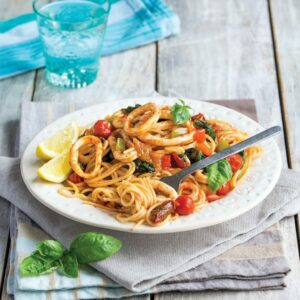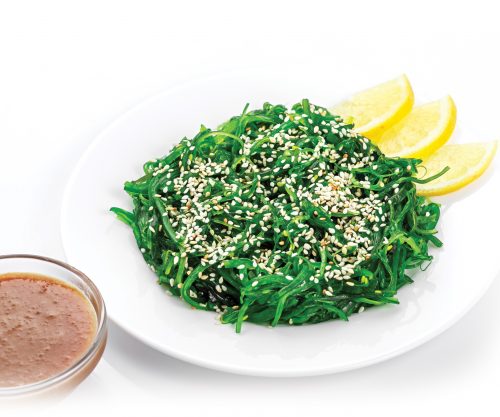
What is it?
There are hundreds of edible varieties of seaweed that can be harvested, including wakame, karengo or kelp. One of the most well-known is nori seaweed – the type used to make sushi.
How is it used?
Dried seaweed can be used to flavour stocks and soups, added to stir-fries, sprinkled on salads, or eaten as a snack. Granulated or flaked seaweed is sold as an alternative seasoning to salt because of its umami (savoury) flavour, but some can still be very high in sodium. Like all seafood, it has spent a lifetime in salt water so it’s soaked up a bit of sodium along the way. Seaweed-flavoured soups and snacks such as crisps, rice cakes and crackers are also available.
The research
Seaweed is used in some of the healthiest regions in the world, including Okinawa in Japan. Studies have found compounds in seaweed can slow digestion, help prevent fat being absorbed and increase good bacteria in the gut. It may also be good for heart health as it contains natural compounds that can help to lower cholesterol and blood pressure, as well as antioxidants that fight inflammation, which can damage cells. Most of the research so far has been in the lab using specific components of seaweed, so we can’t really say that adding a little dried seaweed to our salad will have any particular effect. Despite this, the research does suggest potential benefits of seaweed consumption. As it grows, the algae absorb vitamins and minerals from the sea, including calcium, iodine and potassium. Different seaweeds vary in their nutritional make-up.
A word of caution: Iodine
Although most of our bread is fortified with iodine, it’s possible that many of us don’t get enough of this nutrient, which is essential for the production of thyroid hormones. The recommended dietary intake for iodine is 150mcg per day. Seaweed can be very high in iodine and, while adding seaweed to our diet can be an easy way to increase iodine intake, care needs to be taken not to overdo it, as iodine can be toxic at higher levels. For people who are low in iodine, a sudden, large increase may be problematic. Aim to use products that state the iodine content on the label, increase your intake slowly and be careful not to exceed the recommended upper limit of 1100mcg a day.
Did you know?
- Micrograms of iodine may be indicated on a label with ‘mcg’, ‘ug’ or ‘µg’
- Pregnant and breastfeeding women need more than the standard RDI and a registered 150mcg iodine tablet each day is the safest way for you to add iodine.
From the shop to your table
There are many types available, but we recommend starting with these.
Pacific Harvest Premium Karengo Fronds
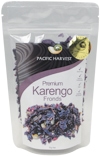
50g pack $14.40
2.5g serve: 24kJ, 77mg sodium, 120mcg iodine
Eat these as a snack or use as a garnish. Add to an omelette, soup or salad, top a pizza or pan-fry with fish.
Pacific Harvest Sea Lettuce Flakes
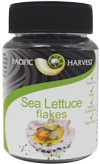
10g jar $8.65
0.5g serve: 5kJ, 2mg sodium, 34mcg iodine
Use sprinkled on salads or add to soups.
Ceres Organics Roasted Seaweed Mild Chilli Nori Snack
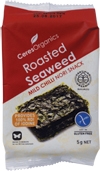
5g pack $2.49
Per pack: 125kJ, 1g fibre, 50mg sodium, 180mcg iodine
A surprisingly satisfying snack or tear the sheets onto a salad to pep it up.
Pacific Harvest Sea Lettuce Leaves
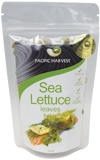
10g pack $9.50
1g serve: 10kJ, 3mg sodium, 68mcg iodine
Adds colour and interest to dishes. Expands a lot when rehydrated.
Article sources and references
- Bouga M & Combet E. 2015. Emergence of seaweed and seaweed-containing foods in the UK: Focus on labeling, iodine content, toxicity and nutrition. Foods 4:240-53https://www.ncbi.nlm.nih.gov/pubmed/28231201
- Brown EM et al. 2014. Seaweed and human health. Nutrition Reviews 72:205-16https://onlinelibrary.wiley.com/doi/abs/10.1111/nure.12091
- Chater P et al. 2015. The role of seaweed bioactives in the control of digestion: Implications for obesity treatments. Food & Function 6:3420https://www.ncbi.nlm.nih.gov/pubmed/26416783
www.healthyfood.com









